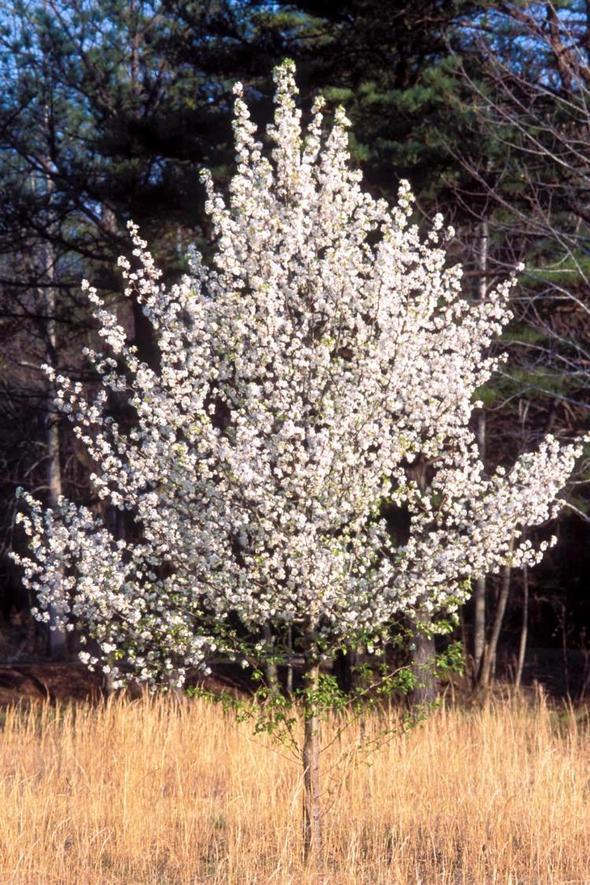|
The
invasive Bradford pear tree can cause problems for Missouri native plants and
animals.
JEFFERSON CITY, Mo. – The
Missouri Department of Conservation (MDC) encourages homeowners and landscapers
to avoid planting Callery pear trees this spring.
Better
known as Bradford pears, the Callery pear tree is an invasive species known to
multiply quickly and crowd out Missouri native plants. While it’s been a
popular landscaping tree for decades, cultivated forms have spread aggressively
throughout the state.
“Different
varieties of Bradford pear trees were planted close to each other, which
allowed them to cross pollinate and take over natural areas,” said Forestry
Field Program Supervisor Russell Hinnah. “But they’re also a poor landscaping
choice because they don’t do well in storms, often losing limbs or splitting
apart.”
Stopping
the spread means selecting alternate trees for yards and forested property.
“The
best plan is to select a native species to Missouri, and there are several
great options,” said Hinnah. “Serviceberry trees produce similar showy white
blooms in the spring and have small red fruits that attract wildlife.”
Eastern
redbuds and Missouri’s state tree, the flowering dogwood, are also good
alternatives. The redbud tree grows quickly with eye-catching lavender flowers
in the spring. Dogwoods do best in shady areas but can be somewhat difficult to
grow.
Learn
more about stopping the spread of the Callery pear at the Callery Pear Field
Event Friday, April 13, in Columbia. Learn more about the event on the Missouri
Invasive Plant Task Force’s website at http://moinvasives.org/event/stop-the-spread-bradford-pear-field-event/.
Learn more about native trees that are
great for landscaping, backyard tree care, selecting the right tree for the
right place, planting tips, watering and pruning info, and more at mdc.mo.gov/tree-health.
 The Callery pear tree (better known
as the Bradford pear) is an invasive species known to multiply quickly and
crowd out Missouri native plants.
|